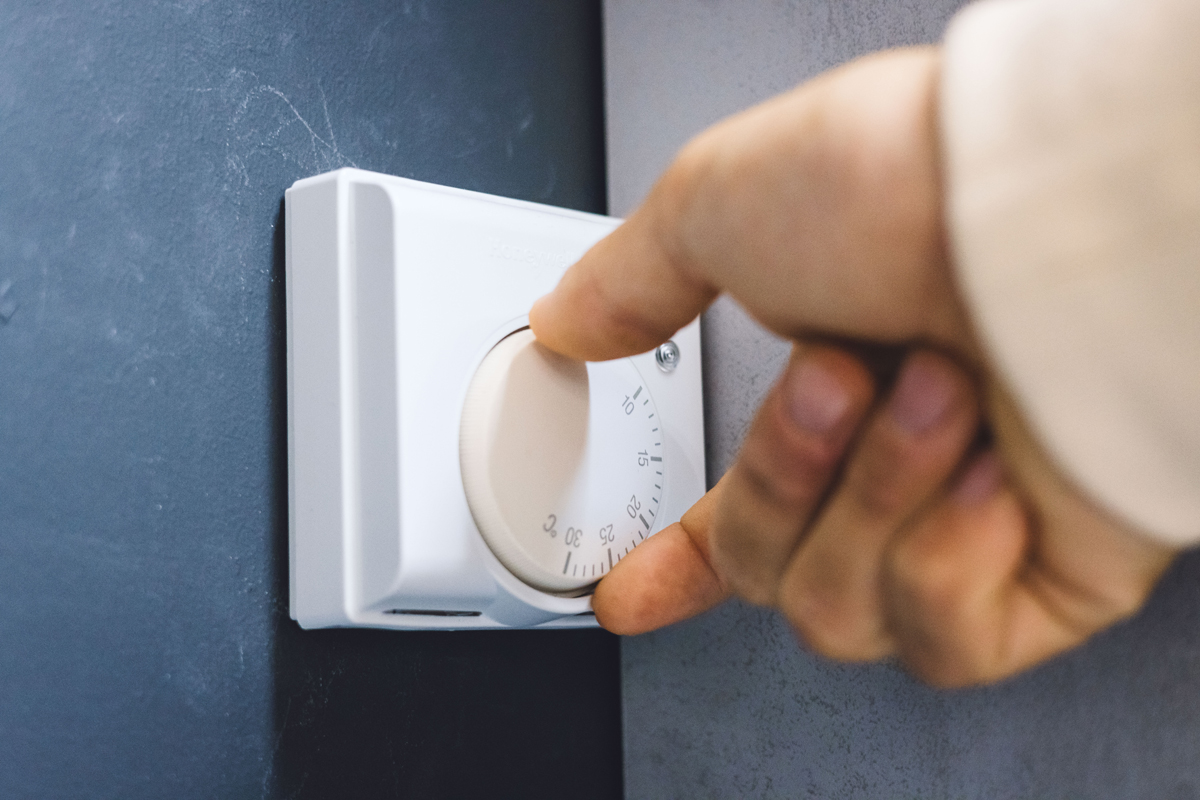
If your home fails to reach your desired temperature, a bad thermostat is the most likely culprit. Let’s look at the most common ways to tell that your thermostat has gone bad below.
How To Tell If Your Thermostat Is Bad
Any one of these seven symptoms listed below are clear indications that your thermostat is bad or failing.
1. Thermostat Has No Power
An unresponsive thermostat is a clear sign of failure. A blank screen ultimately results from either a tripped safety switch, dead batteries, or a major malfunction.
2. Thermostat Reading Is Different Than Room Temperature
Temperature sensors are responsible for triggering the thermostat to turn the HVAC system on. When the sensors wear out or get damaged, the temperature could read either higher or lower than the actual room temperature. Damaged sensors call for professional help to repair them.
In addition, lint, dust, and dirt can accumulate over time, blocking these sensors. If this is indeed the case, try removing the cover and cleaning the inside using a soft brush. The thermostat’s location could also impact the temperature reading. For example, a thermostat near a vent or in direct sunlight, may call for the HVAC professionals to relocate it.
3. Thermostat Will Not Respond
Your thermostat should respond immediately anytime you adjust the temperature settings. If the thermostat does not respond, this could be due to dead batteries, bad wiring, or a circuit breaker short.
At this time, you’ll want to remove the cover and look for any loose or corroded wires. Contact the HVAC professionals if you notice these issues.
4. HVAC System Is Short Cycling
Short cycling will happen when the HVAC turns off prior to completing a full heating or cooling cycle. In most cases, a short-cycling system will not reach your desired temperatures. This can also consume a lot of electricity, causing wear and tear on the HVAC components.
Check your AC’s air filter for any visible dust, lint, and debris buildup. Change the dirty filters if they appear this way. If your system continues to short cycle, it could be due to other malfunctions within the system.
5. AC Or Furnace Will Not Turn On
Any malfunctioning can ultimately stop your HVAC system from turning on. Bad wiring is a common cause of this phenomenon.
It is also possible the thermostat has simply reached the end of its life. Completely replacing the thermostat may be the only solution here.
6. AC Or Heater Will Not Turn Off
Your thermostat knows when the desired temperature is reached, triggering the AC or furnace to shut down. If the system continues to run, however, the thermostat may need recalibration.
Check to see if the thermostat is set to “auto”. This indicates there is continuous air circulation. Turn it to “on” so only the fan alone operates when the furnace or AC is on.
7. Thermostat Forgets Programmed Settings
It is the responsibility of a programmable thermostat to remember both your preferences and schedule. It should never forget these preferences until they are changed manually.
The thermostat may need to be replaced whenever it seems unable to stick to a schedule.
Conclusion
It’s no secret the thermostat plays a vital role in keeping your home or building comfortable. If it becomes damaged or wears out over time, you’ll run into numerous repairs and/or higher energy costs.
For more information, feel free to reach out to the HVAC professionals at Tru Comfort Heating & Cooling today!
Tru Comfort Heating & Cooling In The Phoenix Valley
At Tru Comfort Heating & Cooling, we deliver reliable, efficient, and cost-effective solutions to enhance comfort and water quality. Whether you need HVAC installation, repair, maintenance, or water treatment solutions, our team is here to assist you every step of the way.
Contact us today for exceptional service from an insured and bonded HVAC company. Experience reliable and efficient solutions that exceed your expectations.





